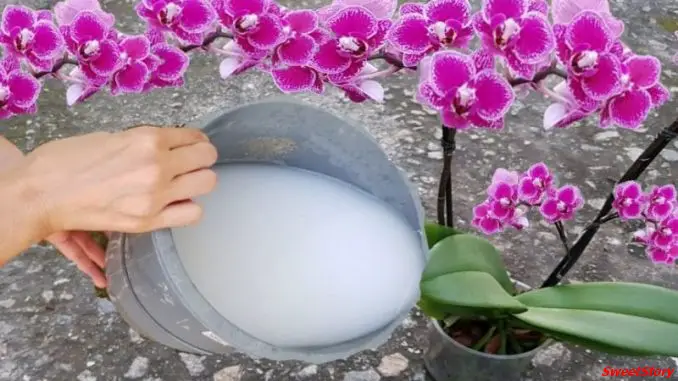
Which plant is better than an orchid to bring a touch of elegance and color to your interior?
The orchid, a distinctive plant native to tropical regions, is one of the most popular yet often the most frustrating. Its beauty is accompanied by the challenge of proper care and cultivation. However, it’s not impossible to grow a healthy, blooming, and beautiful orchid. You just need to follow a few essential tips and pay attention to certain details.
Many people unknowingly make mistakes that can affect the health and beauty of their orchids, often repeating these errors without even realizing the impact. Let’s explore some of the most common mistakes and learn how to avoid them, ensuring our orchids thrive.
1. Improper Potting: Keeping Orchids in Dark Pots
One of the most common mistakes orchid owners make is keeping their orchids in opaque, dark-colored pots. The roots of an orchid need access to light to grow healthy and strong. For this reason, it’s crucial to use a transparent pot, which is typically provided when you purchase a new seedling. If the plant comes in a dark pot, the first thing you should do when bringing it home is to repot it into a clear container. A transparent pot allows you to monitor the health of the roots and spot any potential issues early on.
2. Placing the Orchid in Direct Sunlight
Another common mistake is placing the orchid in direct sunlight. Orchids, accustomed to tropical climates, are often shaded by larger plants, and they do not thrive in direct sun exposure. When placed in direct sunlight, the plant’s leaves can be damaged by excessive heat and light. The buds may even “burn,” preventing them from blooming properly. A typical sign of too much sunlight is the yellowing of the leaves.
Solution: Place your orchid in a bright spot, but avoid direct sunlight. Locations like windowsills facing the north or south or spots with filtered light work well. Indirect light is ideal for the health of the orchid.
3. Low Humidity: A Silent Killer
Humidity is crucial for the survival of your orchid. If you keep it in a dry, low-humidity environment, you’ll soon notice the plant wilting or even dying. Orchids thrive in humidity levels above 60%. The best places in your home to keep orchids are generally the bathroom and the kitchen, as they tend to have higher humidity levels.
If you notice that the air in your apartment is generally dry, a simple trick is to spray a small amount of water on the leaves of your orchid every 2-3 days. This will help maintain the optimal moisture level the plant needs.
4. Using the Wrong Fertilizer
Many people fertilize their orchids without paying attention to the composition of the fertilizer, which is a grave mistake that can negatively affect the plant’s health. Orchids require a specific type of fertilizer that contains more nitrogen than phosphorus and potassium. The ideal ratio is 30:10:10, meaning 30 parts nitrogen, 10 parts phosphorus, and 10 parts potassium.
If the nutrient balance is off, the plant’s growth cycle can be disrupted, leading to poor health or stunted growth. Always follow the recommended fertilizing instructions: during warmer months, fertilize every two weeks, but in colder months, pause fertilization.
5. Overwatering
Just because orchids need to be watered regularly doesn’t mean you should water them every day. The watering needs of your orchid vary depending on the season and temperature. In the colder months (fall and winter), the watering should be kept to a minimum; simply keep the soil lightly moist. However, during hotter months, you can water more frequently.
A good rule of thumb is to water the orchid when the soil feels dry but not completely dry.
6. Too Much Darkness: Orchids Need Light
Just as too much sunlight can harm orchids, too much darkness can also be detrimental to their health. Orchids should never be placed in a completely dark room, such as a windowless bathroom or a location with no natural light. While some people worry that too much light during summer might harm the plant, the reality is that orchids need plenty of light to thrive.
For optimal growth and blooming, ensure your orchid gets several hours of light each day. This is especially important if you want your orchid to bloom beautifully.



